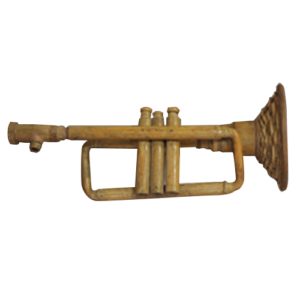Tultugan Festival
“Tultug: The Root of Maasin’s Tultugan Festival” By Hermie F. Cartagena
Bamboo plants are abundant in Maasin. One of the varieties that can be found in the area is the “kawayan tinik” and is produced yearly with more than 2 million poles. Thus, bamboo is the primary material in producing local products and handicrafts in Maasin. The place has been supplying bamboo poles and various handicrafts in Iloilo and has even been exporting them internationally (Marin, 2017). Being one of the primary exporters of bamboo products in the region and the country, this municipality in the central part of Iloilo became known as the bamboo capital of the Visayas.
In celebration of the abundant supply of bamboo products in the municipality, the Tultugan Festival was established. The festival, initiated or institutionalized by Mayor Mariano Malones in 1999, is considered a contemporary festival sponsored by the government (Muyco, 2016). Tultugan came from the word “tultug,” which means the act of making sound by tapping or striking the bamboo instrument (Marin, 2017).
The Tultugan Festival is primarily dedicated to bamboo and its various uses and functions. Held every fourth week of December, it features street dancing and a tribal dance competition. The highlight of the celebration is the tribal dance competition that showcases the various usage of bamboo in the community. The performers show how to creatively utilize the bamboo materials as part of the performance, incorporating them into their props, costumes, and instruments. Aside from the street dancing and tribal dance competition, the festival also highlights the “Gwapo Karabaw,” a contest wherein the participants adorn their water buffalos with various ornaments; “Parada sang Litson,” where roasted pigs are presented in the streets through a parade; “Rara Amakan” contest, wherein the speed in weaving bamboos is tested; “Kadang Race,” a test of balance; and the search for Miss Tultugan (“News Today” 2005, p. 1, paragraph 3). The festival is a way of preserving the local culture for the next generations to come, and various approaches were applied in redesigning and modernizing the bamboo material. Likewise, various rhythmic patterns were composed and developed by local musicians to provide a dynamic and vibrant sound in the performance (Marin, 2017; Jacinto, 2013).
Science in a creative industry.
The DOST-FPRDI has a Bamboo Musical Instruments Innovation R&D program aimed at improving the quality of locally-made bamboo musical instruments (BMIs) through science and innovative technologies. The program seeks to standardize the production of selected BMIs, develop prototype designs, analyze raw material sources and existing markets, and build a BMI processing facility. In addition, the program aims to document the ethnocultural story behind several BMIs and identify the bamboo species used in BMI production to promote public awareness and appreciation of the cultural importance of these musical instruments. The program is a collaboration with the University of the Philippines and Philippine Normal University for teaching modules and analyzing sound quality and standardization of BMI design. The DOST Grants-in-Aid program provides funding.
PhBMI

